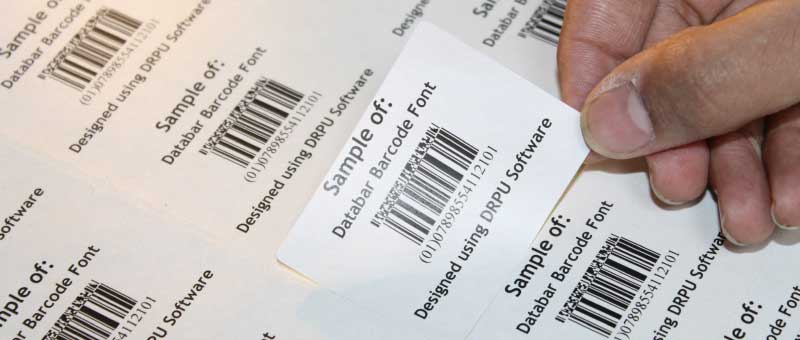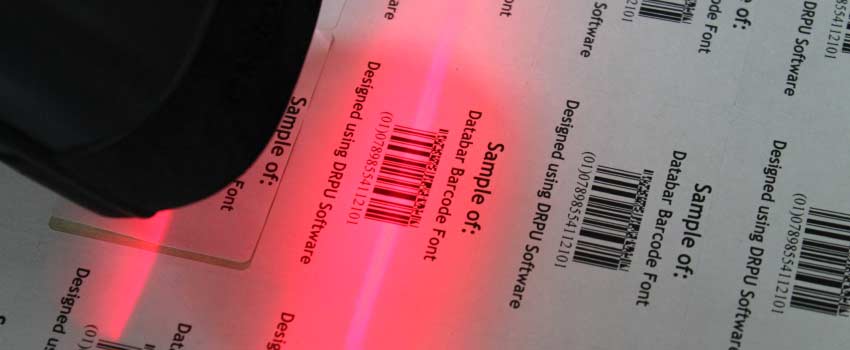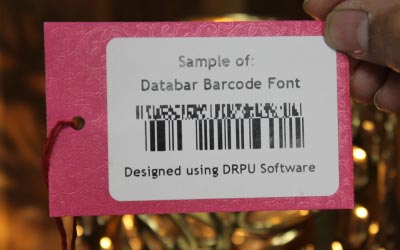Related Topics
Minimum and Maximum Size of a Databar Barcode
- Databar barcodes are designed to encode small amounts of data, such as GTIN (Global Trade Item Number) codes for small products or coupons. They are often used in the retail industry and are found on grocery items, coupons, and other small items.
- The most common Databar subset is Databar Expanded, which can encode up to 74 characters. The minimum size of a Databar Expanded barcode is 0.9 inches by 0.3 inches (23mm x 8mm), while the maximum size is 2.9 inches by 0.9 inches (74mm x 23mm).
- Another subset of Databar is Databar Limited, which is smaller than Databar Expanded and can encode up to 26 characters. The minimum size of a Databar Limited barcode is 0.3 inches by 0.2 inches (7.5mm x 5mm), while the maximum size is 2.2 inches by 0.4 inches (57mm x 10mm).
- Databar Stacked, another subset of Databar, can be used to encode up to 74 characters in a stacked format. The minimum size of a Databar Stacked barcode is 0.5 inches by 0.5 inches (13mm x 13mm), while the maximum size is 2.9 inches by 1.6 inches (74mm x 41mm).
- The size of the Databar barcode also depends on the amount of data being encoded. If more data is encoded, the barcode will need to be larger in order to accommodate the additional characters.
Conclusion: In general, Databar barcodes are smaller than other types of barcodes, making them ideal for small items such as jewelry, cosmetics, and pharmaceuticals.
Information That Can be Encoded in a Databar Barcode
Databar (formerly known as Reduced Space Symbology or RSS) is a family of barcode symbologies that are designed for encoding small amounts of data in limited space. The symbology was developed by Symbol Technologies and was initially used in retail applications to encode GTIN-14 numbers for small-sized products. Today, Databar symbologies are used in a variety of applications such as healthcare, logistics, and inventory management.

There are several variations of Databar symbologies, each with its own structure and encoding capabilities. However, all Databar symbologies share some common characteristics:
-
Data Characters: Databar symbologies can encode a limited set of characters, including numeric digits, uppercase letters, and some special characters such as space, hyphen, and period.
-
Check Digit: All Databar symbologies include a check digit that is calculated based on the encoded data. The check digit is used to detect errors during scanning.
-
Quiet Zones: Like other barcode symbologies, Databar symbologies require a quiet zone on either side of the barcode. The quiet zone is an area of blank space that helps the scanner to detect the beginning and end of the barcode.
The structure of a Databar barcode depends on the specific symbology being used. Here are some common Databar symbologies and their structures:
-
Databar-14:
This symbology is used for encoding GTIN-14 numbers and has a fixed length of 14 digits. The structure of the barcode is as follows:
Application Identifier (AI): The first two digits of the barcode indicate the AI, which identifies the type of data being encoded.
Manufacturer Code: The next five digits represent the manufacturer code.
Item Reference: The next five digits represent the item reference number.
Check Digit: The last digit is a check digit calculated based on the first 13 digits.
-
Databar Limited:
This symbology is used for encoding small amounts of data and has a variable length of up to 74 digits. The structure of the barcode is as follows:
Start Character: This character indicates the beginning of the barcode.
Data Characters: These characters encode the data to be transmitted.
Check Digit: The last character is a check digit calculated based on the encoded data.
-
Databar Expanded:
This symbology is used for encoding more data than Databar Limited and has a variable length of up to 174 characters. The structure of the barcode is as follows:
Start Character: This character indicates the beginning of the barcode.
Application Identifier (AI): The next two digits indicate the AI, which identifies the type of data being encoded.
Data Characters: These characters encode the data to be transmitted.
Separator: This character separates the data fields.
Check Digit: The last character is a check digit calculated based on the encoded data.
Databar symbologies are designed to be compact and efficient, which makes them ideal for use in small-sized products and other applications where space is limited. The ability to encode variable lengths of data also makes Databar symbologies flexible and adaptable to different use cases.
Databar Barcode Read and Decoded
Databar barcode, also known as Reduced Space Symbology (RSS), is a family of linear barcodes that encode a range of data including GTINs, serial numbers, and expiration dates. The barcode is read by a laser or image scanner and decoded using software that interprets the pattern of bars and spaces.
The process of reading and decoding a Databar barcode involves the following steps:
-
► Scanning:
The barcode scanner emits a beam of light that reflects off the barcode and back into the scanner. The scanner detects the reflected light and creates a digital image of the barcode.
-
►
Decoding:
The software in the scanner analyzes the digital image and decodes the pattern of bars and spaces into a string of numbers or characters.
-
►
Verification:
The software checks the decoded data against a pre-set set of rules to ensure that the barcode was read correctly. If the barcode is damaged or unreadable, the scanner may not be able to decode it correctly.
-
►
Output:
Once the barcode is successfully decoded, the data is sent to the connected computer or device where it can be used for inventory management, sales tracking, or other purposes.
Databar barcodes can be read by both handheld and fixed barcode scanners. The scanners can be connected to a computer or mobile device through a USB cable or wireless connection. Some scanners also have built-in memory that can store scanned data until it can be uploaded to a computer or device.
The decoding software used to interpret Databar barcodes is typically included with the scanner or can be downloaded from the manufacturer's website. The software may also provide additional functionality, such as the ability to create and print barcodes.
Conclusion:
The scanning and decoding process for Databar barcodes is similar to that of other linear barcodes, such as UPC and Code 128. However, Databar barcodes have a more compact design and can encode more data than traditional linear barcodes. This makes them a popular choice for retail and healthcare applications where space is limited and more information needs to be encoded in a small area.
Advantages of Using a Databar Barcode
Databar barcode, also known as Reduced Space Symbology (RSS), has several advantages that make it a popular choice in various industries. Here are some of the advantages of using a Databar barcode:

-
Compact Size: Databar barcode is a compact symbology that can encode a lot of information in a small space. This makes it ideal for use on small items such as pharmaceuticals and cosmetics.
-
High Density: Databar barcode has a high data density, which means that it can store a lot of data in a small space. This makes it ideal for use in applications where space is limited.
-
Easy to Read: Databar barcode is easy to read, even at high speeds by using the barcode scanner. This makes it suitable for use in high-speed production lines and logistics applications.
-
Variable Length: Databar barcode can be used to encode variable length data, which means that it can accommodate different data lengths. This makes it flexible and suitable for various applications.
-
Multiple Data Types: Databar barcode can encode various data types, including numeric, alphanumeric, and binary data. This allows it to be used in various applications, including retail, logistics, etc.
-
Error Correction: Databar barcode has built-in error correction, which means that it can still be read even if part of the barcode is damaged. This makes it more reliable than some other barcode types.
-
Security Features: Databar barcode has security features that can be used to prevent counterfeiting and ensure product authenticity. This is important in industries such as pharmaceuticals and electronics, where counterfeiting can be a significant problem.
-
Cost-Effective: Databar barcode is a cost-effective solution that can be used in various types of applications. It is easy to generate and print, and there are many barcode generator tools available to create and manage Databar barcodes.
Summary: Databar barcode is a compact, flexible, and reliable symbology that can be used in various industries. Its high data density, easy readability, and error correction capabilities make it a popular choice in logistics, healthcare, and retail applications. Its security features and cost-effectiveness also make it a viable option for industries that require product authentication and anti-counterfeiting measures.
